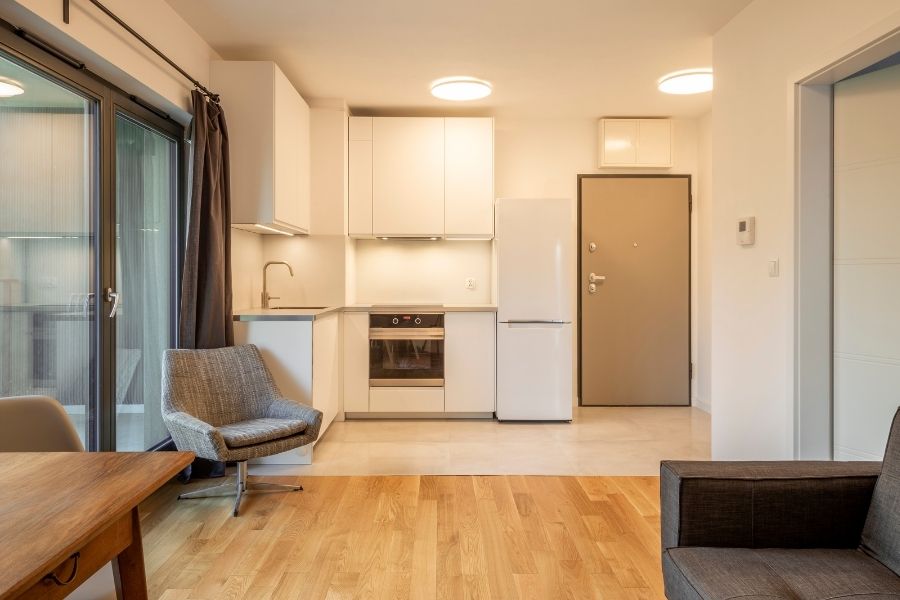Micro-apartments are revolutionising small space living rentals in Wellington, offering affordable urban housing solutions for students and professionals in the city’s fast-growing core. These compact, cleverly designed residences maximise living space, foster community, and respond directly to shifting tenant needs and urban market pressures.
This post explains the concept, design strategies, marketing approaches, and real Wellington examples, and includes a practical FAQ for tenants and investors.
Table of Contents
What Are Micro-Apartments?
Micro-apartments, typically under 30 m², are self-contained living spaces designed for efficiency, affordability, and urban convenience. They originated in major global cities facing housing shortages, like New York and Tokyo, and are now helping to reshape Wellington’s rental landscape.
Unlike studio flats, micro-apartments feature space-saving layouts, multi-purpose furnishings, and integrated amenities to make the most of every square metre.
Wellington’s urban core, faced with high rents and limited land, is seeing micro-apartments as a practical solution for singles, students, and professionals seeking to live centrally without breaking the bank.
Read more: Adapting to Changing Tenant Needs: Flexible Living Solutions in Wellington
Micro-apartments are formally recognised as a distinct type of housing within the wider category of small-space and maximised housing forms.
Learn more about the characteristics of microapartments and different apartment types.
Design Tips for Functional Micro-Living Spaces

Creating micro-living spaces that don’t feel cramped requires thoughtful, innovative design. The aim is to achieve a comfortable, visually spacious, and highly functional home.
- Use vertical space: Install wall-mounted shelving, lofted beds, and tall cabinetry to keep floors clear and maximise storage.
- Multi-functional furniture: Opt for foldaway beds, expandable tables, and under-sofa storage that adapt to tenants’ changing needs.
- Natural light and mirrors: Large windows and wall mirrors can make small spaces feel much larger and more inviting.
- Integrated appliances: Compact, built-in washer-dryers, mini dishwashers, and combination cooktops save space without sacrificing daily convenience.
- Open layouts: Fewer walls and open-plan designs keep sightlines long and movement easy, creating the feeling of spaciousness.
Designing with Homestar 6 environmental standards in mind is increasingly important, as Wellington’s rental market puts value on energy efficiency and healthy homes. Retrofit solutions, such as double glazing and heat pumps, are becoming standard for micro-apartments to comply with national regulations and attract long-term tenants.
Target Demographics and Marketing Strategies
Micro-apartments appeal most strongly to young professionals, students, digital nomads, and contract workers – all groups that prioritise location, affordability, and flexibility over size.
Target Demographics
- Students: Victoria University and other tertiary institutions drive demand, especially at peak times like the start of the academic year.
- Young professionals: Proximity to the CBD, government offices, and tech hubs is a major driver, with professionals seeking easy access to work and city amenities.
- Remote workers: Properties offering reliable internet, quiet work nooks, and communal co-working lounges are highly attractive in today’s market.
Marketing Strategies
- Peak season targeting: Gear campaigns for students in January–February and young professionals throughout the year, adjusting offers in real-time as supply and demand fluctuate.
- Digital-first listings: Use professional photos, 360-degree videos, and SEO-optimised listings on Trade Me, Airbnb, and the Taylor Property Plus website.
- Flexible lease options: Short-term leases and furnished units meet the changing demands of remote workers and international tenants.
- Highlight compliance and features: Emphasise Healthy Homes compliance, sustainability measures, pet-friendly policies, and smart home tech to stand out.
Read more: Co-Living Spaces in Wellington: What Landlords, Tenants and Investors Need to Know
Wellington’s Urban Core: Case Studies and Examples
Wellington’s central suburbs – Te Aro, Mount Victoria, and the city centre – are ground zero for micro-apartment development.
Te Kāinga Affordable Rental Programme
Wellington City Council’s Te Kāinga programme deploys long-term leases with developers to retrofit commercial buildings into micro-apartments for key workers, students, and professionals. There are currently 290 units across three Willis Street buildings, with the aim to increase this to 1000 units over five years. These apartments feature modern layouts, energy-efficient utilities, and occupy prime CBD locations.
Market Trends
- Central Wellington rents: Smaller furnished apartments command a premium, fetching up to $500/week for one- or two-bedroom units, often shared for affordability.
- Supply and demand: Trade Me reports a 41% increase in rental listings, reflecting both high vacancy rates and a competitive market, underlining the need for unique offerings such as micro-apartments.
- Tenant incentives: In response to shifting market power, some landlords are offering perks like free rent weeks or grocery vouchers instead of simply lowering prices.
Going Beyond the Basics

Landlords who are looking to rent out a micro-apartment need to go beyond the basics. At Taylor Property Plus, we work with landlords and owners to:
- Prioritise sustainability: All new micro-apartments should be designed or retrofitted to achieve Homestar 6 standards and Healthy Homes compliance.
- Tenant advisory services: Provide free move-in support for students and young professionals, including help navigating Work and Income housing subsidies.
- Community-building events: Organise monthly socials and workshops for building residents to foster a sense of belonging and encourage longer tenancies.
- Remote-friendly features: Ensure you have high-speed internet, smart keyless access, and dedicated co-working lounges to differentiate your small-space living rentals from competitors.
- Feedback-driven improvements: Carry out regular surveys to ensure tenant needs are heard and drive continuous upgrades to layouts, furnishings, and facilities.
FAQs: Micro-Apartments in Wellington
What is the average size of a micro-apartment in Wellington?
Most micro-apartments range from 20–30 m², optimised for one resident but sometimes suitable for couples.
Who typically rents micro-apartments?
Students, young professionals, remote workers, and individuals on short leases are the main tenants for small space living rentals in Wellington.
Are micro-apartments more affordable than traditional apartments?
Yes. Micro-apartments in central Wellington often rent for 20–30% less than standard one-bedroom apartments, with some available for under $500/week. Shared units drive costs down further.
What should I look for in a micro-apartment?
Key features include efficient storage, energy efficiency, access to communal spaces, proximity to transport, and flexible leasing options.
How do micro-apartments support remote work?
Landlords should incorporate designs that include high-speed internet, built-in desks, quiet zones, and on-site co-working lounges, making them ideal for remote professionals.
Are pets allowed in micro-apartments?
Pet-friendly units are available, especially with the new pet bond proposal rolling out in late 2025, allowing landlords to collect a separate bond to cover potential damages.
Are micro-apartments safe and healthy?
All properties managed by Taylor Property Plus meet New Zealand’s Healthy Homes Standards, ensuring safe heating, ventilation, and insulation.
Micro-apartments are part of the future of affordable, flexible urban living in Wellington’s city core, delivering on space, value, and tenant experience for the next generation of residents.



